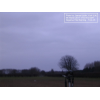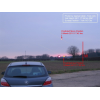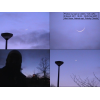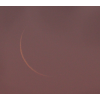Visibility of Rabee' Al-Aakher Crescent 1432 AH
- When to Observe Rabee' Al-Aakher Waxing (NEW) Crescent ?
- Rabee' Al-Aakher Waxing (NEW) Crescent Observation Results
- The OFFICIAL First Day in Different Countries
- When to Observe Rabee' Al-Awwal Waning (OLD) Crescent ?
- Rabee' Al-Awwal Waning (OLD) Crescent Observation Results
When to Observe Rabee' Al-Aakher Waxing (NEW) Crescent ?
The geocentric conjunction (Geocentric New Moon) will occur Inshalla on (Friday 04 March 2011) at 20:46 UT.
Sighting the new crescent on (Friday 04 March 2011) and (Saturday 05 March 2011) is shown in the below graphs using the program Accurate Times by Mohammad Odeh according to Odeh criterion. Where:-
- It is impossible to see the crescent from the areas located under the red color. Because either the Moon on this day sets before the Sunset and/or the topocentric conjunction occurs after the Sunset.
- The crescent is expected to be seen by optical aid only from the areas located under the blue color.
- The crescent is expected to be seen by optical aid from the areas located under the magenta color. In these areas the crescent could be seen by naked eye if the atmospheric conditions are superb and the observer is experienced.
- The crescent is expected to be easily visible by naked eye from the areas located under the green color.
- The crescent cannot be seen from uncolored areas, even though the Moon sets in these locations after the Sunset and the topocentric conjunction occurs before the Sunset, but the Moon is not sufficiently illuminated in order to be seen as crescent even by optical aid.
- Kindly notice that the below graph shows the possibility of seeing the crescent from areas between 60 degrees north of Equator down to 60 degrees south of Equator.


According to the Universal Hejric Calendar (UHC), which is based on the calculated crescent visibility, the start of this month in the Eastern Region will be on Sunday 06 March 2011 and in the Western Region will be on Sunday 06 March 2011. Kindly notice that the UHC is a pre-calculated calendar, which adopts a certain criterion to start the new Hejric month. Your country/organization might adopt different criterion to start the new Hejric month. So it is highly advised to read the UHC website before giving any judgment.
- Results of seeing the crescent, and the first day of the month in different countries will be added here Inshalla as we receive the reports from ICOP's members. If you wish to be a member in ICOP, or to know more about it, kindly click here.
Rabee' Al-Aakher Waxing (NEW) Crescent Observation Results
Sat 05 March 2011
Algeria
Mr. Hocine Chikh Aissa said: " Rabi Thani 1432 crescent was seen with difficulty from Ammi Said insttitut by naked eye by other. The crescent was not seen by binoculars 07x50 (Poor quality). and there are observed juputer with the four moons, 18 persons were present in this observation."
Germany
Eng. Martin Elsaesser said: "The young crescent could be observed visually from munich, despite a lot of haze in the sky. Crescent age was about 21h and elongation from the sun about 9.7°. The established CCD technique pinpointed the exact location and allowed to search the correct region of the sky visually, after having aligned on the sun and mercury earlier. After some thicker clouds had moved, i could see the crescent visually with a pair of 20x60 binoculars. I could see the crescent visually during its descent for about 20 minutes, till it simply got to dark to see, a very thin, dark-red line. I never saw it with naked eye. The CCD technique showed it for 10 more minutes, all the way to the local horizon, but i had to increase exposure by more than 100x compared to the earlier brightness levels. The haze sure caused a lot of absorption. More images and details on my homepage: http://www.mondatlas.de/other/martinel/sicheln2011/maerz/crescent_20110305.html"
Iran
Jordan
Ms. Basma Dhiab said: "We were 5 members of JAS trying to observe the crescent. We were on our way outside Amman, on the highway when we found a bridge so we spent few minuties there but the western horizon was hazy."
Norway
Mr. Milad Ali Ershaghi said: "On Saturday, March 5th, 2011, sunset time was 5:54pm and moonset time was 7:13pm in Oslo, Norway. I looked for the moon between 7:05pm-7:10pm near my home but was unable to see it."
Oman
Prof. Mohammed Al-Bussaidi said: "It was totally cloudy we could see anything to the western horizon before and after sunset."
Pakistan
Mr. Alam Sultan said: "Today, on my request, nearly 100 persons ( members of the moon-sighting committees of our institute "JAMIA-TUR-RASHEED" + my friends + their companions) tried to sight the moon all over Pakistan at more than 19 places but the moon could not be sighted, as it was astronomically expected tonight. It was clear or little hazy at half places but other half places were full cloudy. Note 1: Today (Saturday, 5 March 2011) the conditions of the moon were so defective in the half world especially in Pakistan that according to the all old and new criteria of moon-sighting, there was no solid proof in the history of astronomy to sight such a moon by naked eyes in Pakistan. Note 2: Chairman of central official moon-sighting committee of Pakistan "Mufti Munee-bur-Rahman" told me on my mobile phone that as he did not receive any positive report of moon sighting from all over Pakistan, therefore he officially announced that Sunday 6 March 2011 is the 30th Rabee-ul-Awwal 1432 and 1st Rabee-uth-Thani 1432 will fall on Monday 7th March 2011. Note 3: After some days, inshaallah, a detailed report of this observation will be available at www.esnips.com/web/moonnewsofjamiaturrasheed "
Saudi Arabia
South Africa
United Kingdom
Mr. سليمان غني said: "The 15 of us attempted a sighting from the third floor of the Tooting islamic Centre in South London. The Western horizon was cloudy. The Hilal was not seen."
Eng. Qamar Uddin said: "On Saturday 5 March 2011 (29 Rabi-ul Awwal 1432 AH) many people from throughout UK have attempted to sight the crescent moon (Hilal) of Rabi-ul Thani after sunset. Special arrangements were made to observe from high locations as the first visibility started from the UK before most of the world. Unfortunately, none of the groups were able to sight the Hilal as most places were cloudy.However we have received reliable sighting news from Morocco. Therefore, the Ulama (including Wifaq/Batley) have decided that the month of Rabi-ul Awwal 1432 AH will have 29 days and the month of Rabi-ul Thani 1432 AH will start from Sunday 6 March 2011, Insha-Allah. The York Astronomical Society (YAS) group comprised of 30 observers, as follows. From Batley: Maulana Hasib Mayat, Maulana Habil Makda, Maulana Mohammad Ali Mangera, Maulana Hashim Sacha, Maulana Ismail Sacha, Maulana Abu Bakr Sufi, Maulana Amin Pandor, Maulana Imran Lunat, Qari Ismail Makda, Hafez Yusuf Qadri, Khalid Lakhi, Mohammad Patel, Yasin Munshi, Faryan Adam, Yahya Lunat, Moosa Ravat, Mohammad Bulbulia, Anwar Nadat, Ilyas Patel, Sufyan Pandor, Nazir Abed, Yakub Sallu, Yusuf Mayat, Mohammad Mayat and Vashiullah Bodiat. From York: Philip Holmes, Rupert Powell, Dawood Wilkinson and Qamar Uddin. Note that we knew precisely where to look for the Hilal from the YAS Observatory as shown on the attached photographs. "
United States
Dr. Javad Torabinejad said: "Due to an overcast sky condition, no crescent sighting was attempted."
Dr. John Caldwell said: "crescent horns orientation was unusual, being to the right of the sun in azimuth"
Sun 06 March 2011
Pakistan
Mr. Alam Sultan said: "On my request, Today (Sunday 6 March 2011 = 30 Rabee-ul-Awwal 1432 in Pakistan) nearly 100 persons (Members of the moon-sighting committees of our institute "JAMIA-TUR-RASHEED" + my friends + their companions) tried to sight the moon all over Pakistan and resultantly easily sighted the crescent at 15 places in 3 provinces (Sindh, Punjab, Khyber-Pakhtoon-Khwa). Due to clouds or rain, there is no positive report from Balochistan. It had been announced yesterday officially that Monday 7th March 2011 is 1st Rabee-uth-Thani 1432 in Pakistan. "
United Kingdom
Eng. Qamar Uddin said: "On Sunday 6 March 2011 (30 Rabi-ul Awwal 1432 AH) many people from UK were able to sight the crescent moon (Hilal) of Rabi-ul Thani after sunset (see attached photos). However, the UK ulama had already decided that Rabi-ul Thani 1432 AH will start from Sunday 6 March 2011, having received confirmed sighting news (Muhaqaq Ruyat-e-Basari) from Morocco."
The OFFICIAL First Day in Different Countries
Sun 06 March 2011
1 . Iran
2 . Oman
3 . Saudi Arabia
4 . United Kingdom
Mon 07 March 2011
1 . Pakistan
2 . South Africa
When to Observe Rabee' Al-Awwal Waning (OLD) Crescent ?
The geocentric conjunction (Geocentric New Moon) will occur Inshalla on (Friday 04 March 2011) at 20:46 UT.
Sighting the OLD crescent on (Friday 04 March 2011) and on (Thursday 03 March 2011) is shown in the below graphs using the program Accurate Times by Mohammad Odeh according to Odeh criterion. Where:-
- It is impossible to see the OLD crescent from the areas located under the red color. Because either the Moon on this day rises after the Sunrise and/or the topocentric conjunction occurs before the Sunrise.
- The crescent is expected to be seen by optical aid only from the areas located under the blue color.
- The crescent is expected to be seen by optical aid from the areas located under the magenta color.. In these areas the crescent could be seen by naked eye if the atmospheric conditions are superb and the observer is experienced.
- The crescent is expected to be easily visible by naked eye from the areas located under the green color.
- The crescent cannot be seen from uncolored areas, even though the Moon rises in these locations before the Sunrise and the topocentric conjunction occurs after the Sunrise, but the Moon is not sufficiently illuminated in order to be seen as crescent even by optical aid.
- Kindly notice that the below graph shows the possibility of seeing the crescent from areas between 60 degrees north of Equator down to 60 degrees south of Equator.
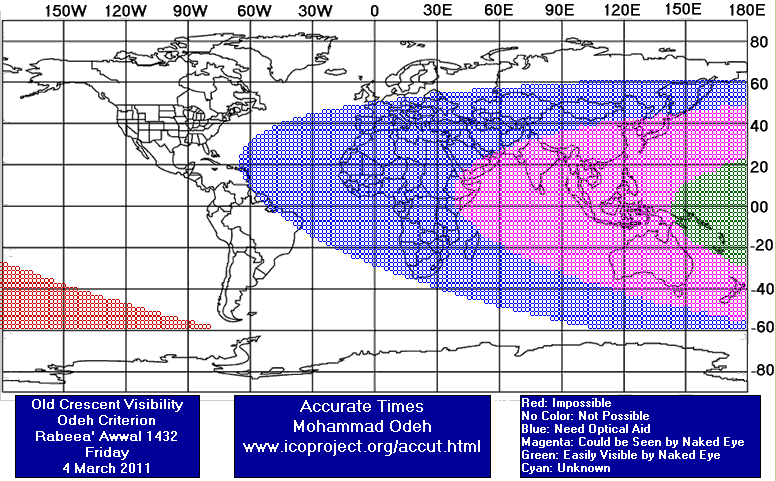
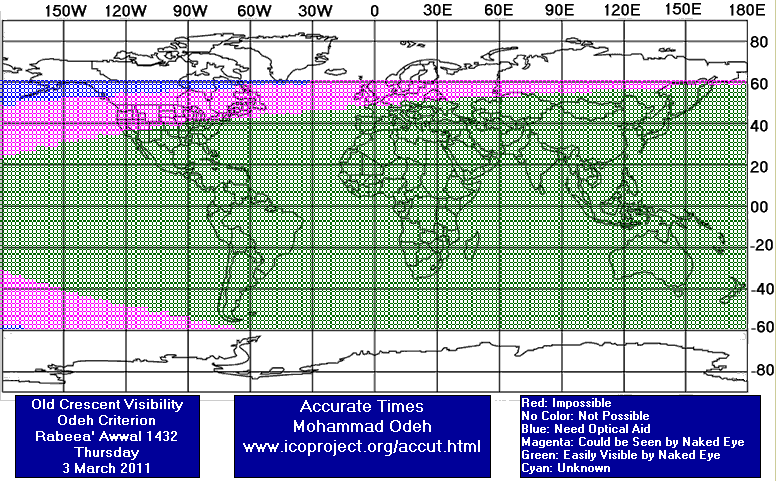
Rabee' Al-Awwal Waning (OLD) Crescent Observation Results
Thu 03 March 2011
Germany
Eng. Martin Elsaesser said: "The crescent could be seen without any optical aid, but earthshine was not visible, due to haze and low altitude."



